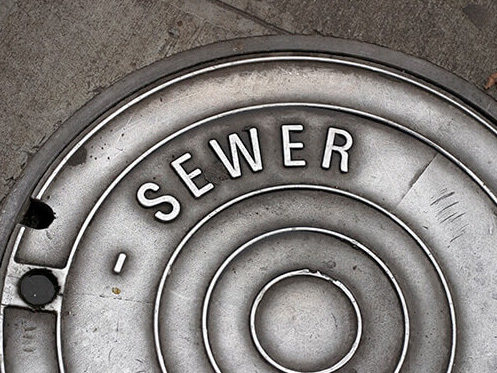Once upon a time, a young couple bought their very first home. They had very little money and we’re on a tight budget but were lucky enough to swing the deal on their dream home. They moved in and put boxes of their belongings in the basement. They planned to empty them as time allowed.
After a deserved night of sleep in their new surroundings, they woke up to a really bad odor. They went downstairs and found the boxes of their prized possessions in about one foot of sewage. The main sewer had backed up. There was yucky black sewage everywhere.
The young couple was devastated. They felt let down because the home inspector had not identified it as a problem on the inspection report and the sellers failed to disclose the fact, they knew the sewer was defective. This sounds like a bad fairy tale, but it happens a lot more than most people realize.
So how do you spot indications of defective sewers when buying a home or other real estate? A simple indication to start with is to examine the main sewer stack to see if the cleanout plug has been removed or if there are advertisements on the sewer stack from companies that cable sewers. Some sewer stacks have multiple stickers.
The best solution is to use sewer camera technology for approximately $175 to $200 that can verify the condition of the sewer. A sewer camera inserted on the main sewer stack allows video inspection of all underground piping. The good news is the visual quality is incredible. The bad news is you may see some things you do not want to see!
A defective sewer can be a deal-breaker in a property sale but using a sewer camera can protect the buyer. It’s also a great bargaining chip to use to get the seller to pay the costs of that broken sewer. The problem is documented and the seller either needs to fix the sewer defect or disclose it from that point on.
From an engineering standpoint, a properly designed and installed sewer should provide a lifetime of service if used properly. The proper gradient or slope of the pipe is essential. The City of Lincoln Plumbing Code calls for ¼” of slope on sewer pipes 4” and smaller. If a pipe has less than a ¼” of fall, the solids settle out and eventually cause blockages. If a pipe has too much fall, the liquids tend to leave the solids behind.
Let’s take a cruise with that camera down the sewer and discuss what to expect. As the camera travels down the sewer pipe, it may get partially or completely submerged in sewage. That indicates the sewer has settled and the pipe gradient may be flat or even elevated in the wrong direction. Solids will settle out in those low areas, resulting in blockages. The sewer camera may also expose cracks, broken pipe joints, tree roots, and other issues. Typically, the solution is to dig up the sewer main and correct the gradient issues.
Sewer cameras with locator technology will tell you exactly where the defective sewer is and can even provide the depth of the sewer at that point. That helps cut the costs of sewer repairs and damage to yards.
If you need to get a sewer cable, it’s a great idea to get a video inspection. Sewers never heal themselves. If they are defective today their condition will be worse tomorrow. There never is a good time to have sewage backing up in a home or business. Worse than that is it’s not just “water”. There is no reason to put a sewer repair off.
The drought last year caused quite a few sewer breakages. Ironically the rainy season now is causing more breakages as the ground moves once again. One of the first signs of the main sewer problem is typically when the basement floor drain backs up. If that happens, call the plumber and start moving prized possessions to the higher levels!
The happy ending to this story is the young couple saw our company sticker on the sewer stack and called us. Our video inspection records showed the sewer had prior issues that were not disclosed. Truth is a patient hunter. Even though the sale was complete, the young couple was able to negotiate the repairs from the seller and they lived happily ever after!

